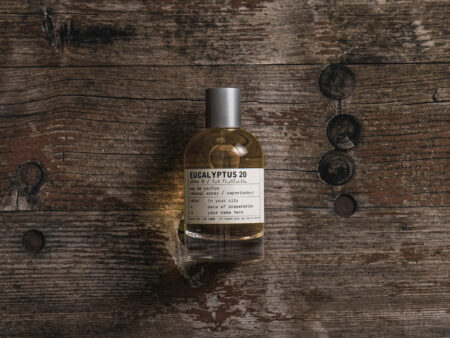
Le Labo Eucalyptus 20
“EUCALYPTUS 20, the unambiguous scent of vastness. With this scent comes an invitation: Get off the grid.” ~ excerpt extracted from Le Labo copy.
Le Labo Eucalyptus 20 (the latest fragrance in the brand’s Classic Collection), one which was inspired by a landscape populated by inestimable expanses of red dry soil and endless sky. Le Labo envisions one lone eucalyptus (aka gum tree) as an oasis. Eucalyptus 20 is non-gendered – an earthy, woody explosion of terpenic verdancy: all hail the life-giving green which inhabits the most unlikely locales.
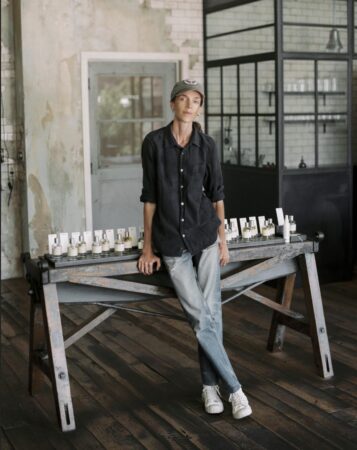
Deborah Royer Global Brand President & Creative Director, Le Labo Fragrances
“There’s a saying that in order to find your way, you must first get lost.” Deborah Royer, Global Brand President & Creative Director, Le Labo Fragrances
There isn’t just one species of eucalyptus tree; there are well over 700 varieties! Most Europeans associate its discovery with the advent of Captain James Cook in 1770, when he first sailed into Botany Bay. Cook made three trips to the Antipodes, and on his third exploration in 1777, a native eucalypt specimen from southern Tasmania was eventually brought to London’s British Museum for further scrutiny. Eucalyptus has a much longer history than most of us are aware: the oldest known fossils were found in Patagonia, dating from the Eocene epoch (a geological era spanning roughly 56-33.9 million years ago). Since then, these aromatic trees have been introduced around the globe, in such varied locations as California, Argentina, Uruguay, Brazil, Angola, multiple African nations, Portugal, Italy, Greece, Asia, the Pacific Islands – even Ireland. Most species are evergreens, and many thrive in different climates, provided that they are moderate and sunny with relatively mild winters.
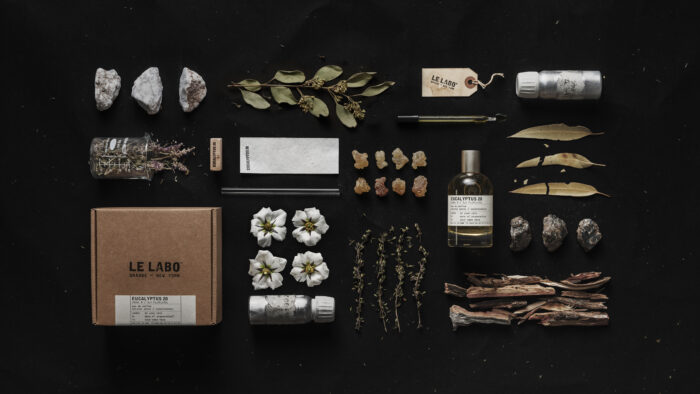
Flat lay of Le Labo Eucalyptus ingredients
I realize that I tend to wax pedagogical (I think it’s genetic), and I don’t wish to exhaust your patience: there is just so much to say about this remarkable flowering plant. It possesses opposing qualities which may be seen as a boon and/or a burden, ecologically speaking. Eucalyptus’ cultural inferences are likely more intriguing to explore.
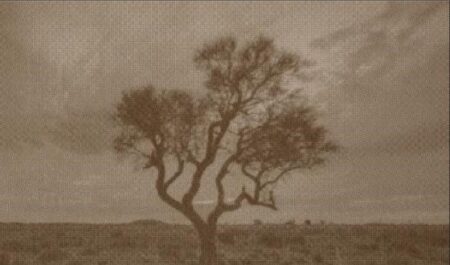
Eucalyptus Tree image excerpt from Le Labo
The eucalyptus is considered a holy tree by the Indigenous peoples of Australia. For the Aboriginals, it represents the division of the underworld, earth, and heaven – and eucalyptus trees are revered as sacred symbols of healing, endurance, protection, and a deep connection to the land. They are used for reforestation, land reclamation, and as a source of firewood and timber in various parts of the world. There are several medical applications as well: eucalyptus oil is extremely potent, and has been employed as an antiseptic, antiviral, insect repellent, breath freshener, for muscular and joint pain relief, and relief of upper respiratory congestion. Due to the eucalyptus’ penchant for absorbing very large quantities of water, they have been planted near swampy areas and are thought to help curtail the spread of malaria.
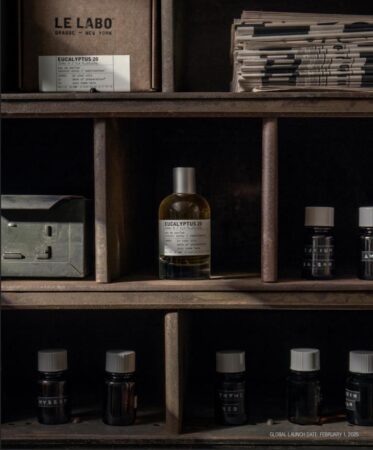
Le Labo Eucalyptus 20
Le Labo Eucalyptus 20, first and foremost, smells very natural, woodsy, and herbal/medicinal to a certain degree. I think that this should come as no surprise when we examine the olfactory materials present in this very powerful, long-lasting perfume. There is not one shy component here; every single element is terpenic to some degree, with the exception being musk. Wow. What does that mean to our nose? Terpenes are naturally occurring volatile unsaturated hydrocarbons found in the essential oils of plants; they are responsible for each plant’s unique flavor and aroma – and they are bioactive, so they affect the body, too. We frequently encounter terpenes in conifers of all sorts and citruses – but in recent times, a great many identify their presence in cannabis.
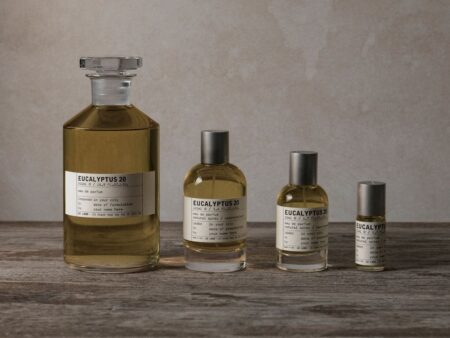
500ml, 100ml, 50ml, 15ml
There is no cannabis in Eucalyptus 20. You will unearth a pronounced odor of sanctity when you experience it. This fragrance is soothing on several levels, not the least being the calming depth of olibanum (also known as frankincense) and the richly contemplative inherent nature of labdanum and eucalyptus. Gurjun balsam is softly woody with a vein of spice running through it; it’s an intuitive companion to cedarwood, and helps fix the other notes. Red thyme is spicy, warm, and penetrating, a bit on the sharp side, while hyssop’s aroma is sweeter, with a scintilla of anise inflection and a rootiness one finds in Florentine iris: each possesses an herbal, slightly medicinal facet. I imagine that Eucalyptus 20 would linger forever even without the addition of musk; there is so much character and personality within its formula. Strong personalities rooted in the earth which sing triumphantly of verdancy. Tread the path less traveled, and revel in green.
Notes: A total of 20 ingredients that include: olibanum, gurgun balsam, cedarwood, eucalyptus, labdanum, hyssop, musk, red thyme
all photos Le Labo©
Le Labo kindly gifted me– many thanks! My nose is my own…
~ Ida Meister, Deputy and Natural Perfumery Editor
Please feel free to leave a comment on Ida’s fascinating review and study of Eucalyptus
Rachel K. Ng’s review of Lavande 31 (classic collection) here, Ida’s review of City Exclusive for Mexico City Coriandre 39,Please read Lauryn’s The Three Le Labo City Exclusives You Should Be Wearing here
Michelyn’s interview with Le Labo co-founder Fabrice Penot
Follow us on Instagram @cafleurebonofficial @idameister @lelabofragrances
This is our Privacy Policy
